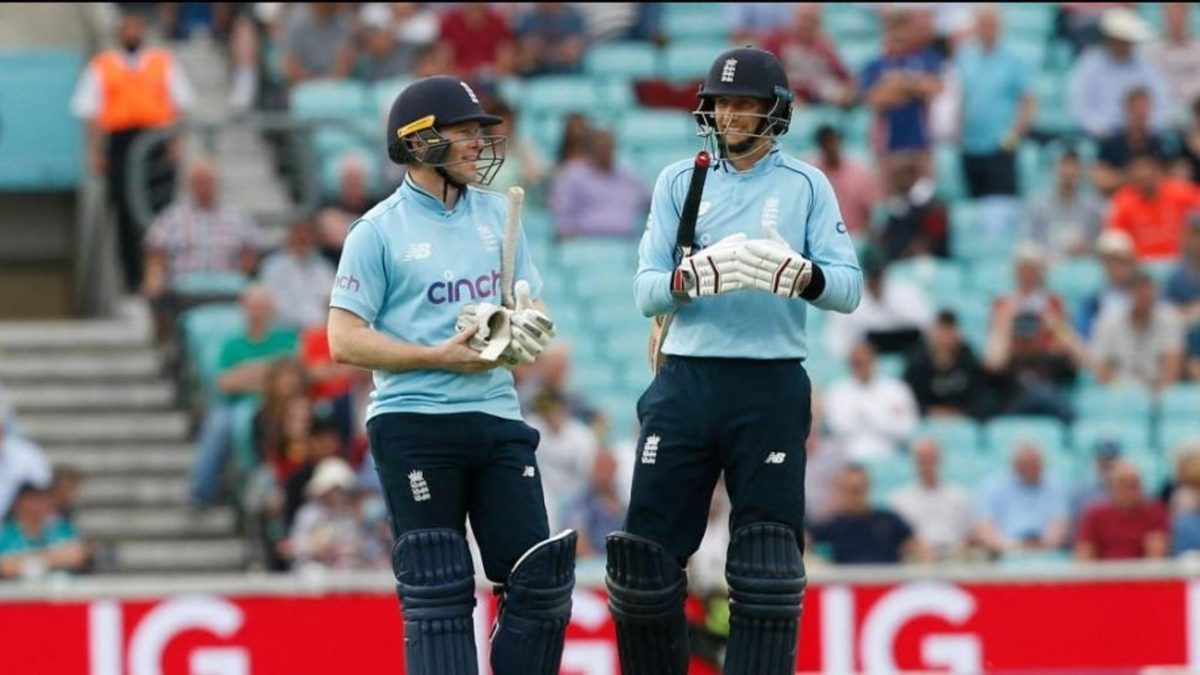
For all the understandable focus on T20 cricket as two World Cups in the format loom large, the 2023 50-over World Cup is creeping ever closer, too.
England will go into the tournament seeking to become the third side to retain the trophy and just the second to do so in the last forty years. In each of the three instances a men’s World Cup has been retained, there were five changes to the winners from the XI that triumphed four years previously – evolution has historically been essential.
But with two T20 World Cups to be fought over before the 2023 tournament, it is harder to hit the reset button years out of a major event. Of the players originally picked for the ongoing ODI series against Sri Lanka, only the Currans, Liam Livingstone and the uncapped George Garton – all of whom are on the periphery or outside of what you’d expect England’s first choice XI to be – are under the age of 30.
So, two years out, it looks as if England are going to have to do things differently from the sides that have previously managed to retain the trophy.
What’s going right?
Fitness permitting, England will reach the tournament with a squad replete with World Cup winners. The vast majority of the XI will be in their thirties but you would expect most, if not all, of the current crop to make the competition. You’d be surprised if there were any changes at all to the top six from the 2019 World Cup final by 2023 and with the exception of Liam Plunkett, who was ruthlessly discarded after England’s 2019 victory, you’d expect the rest of that XI to make the plane.
Sam Billings and Sam Curran are the two players who have advanced their cases the most since 2019, with the former enjoying a breakout year in 2020 and the latter almost pulling off an extraordinary run-chase on his own earlier this year in India.
England’s batting depth is immense, as seen by the manner in which Liam Livingstone and Dawid Malan looked immediately at home when called upon on that tour of India.
What’s going wrong?
‘Going wrong’ is probably a stretch, but England haven’t found life that easy in ODI cricket since the 2019 tournament. The already packed schedule, exacerbated by the COVID-19 pandemic, and the impending T20 World Cups have meant that the 50-over side has received less love and attention that it would otherwise have received at the halfway point in the four-year World Cup cycle. Such is the intensity of the workloads for England’s cross-format stars, Jofra Archer and Ben Stokes have appeared in just three ODIs each since that glorious day at Lord’s.
Since 2019, England have lost fiercely fought encounters against India and Australia and fell to Ireland in what was effectively a World Cup qualifier at the Ageas Bowl. England have had brief looks at youth, with Saqib Mahmood, Tom Banton and Matt Parkinson all debuting in the format but there is little evidence any of them are that close to forcing down the door.
In the absence of Plunkett, England have not been penetrative enough in the middle overs with the ball; it’s probably their greatest area of concern. Elsewhere, the lack of overs bowled – and wickets taken – by frontline spinners other than Adil Rashid has been less than ideal, particularly if Rashid’s shoulder issues were to flare up again.
So overall, pretty good?
Yes. The lack of ODI cricket played globally in the last two years probably plays into England’s hands. Opportunities to blood in a new generation of ODI players have been few and far between. Though however well England prepare, beating India on the own patch will be an almighty task but not one outside of their reach.







